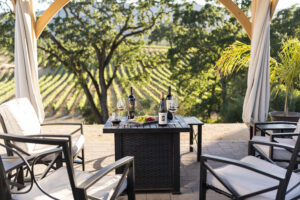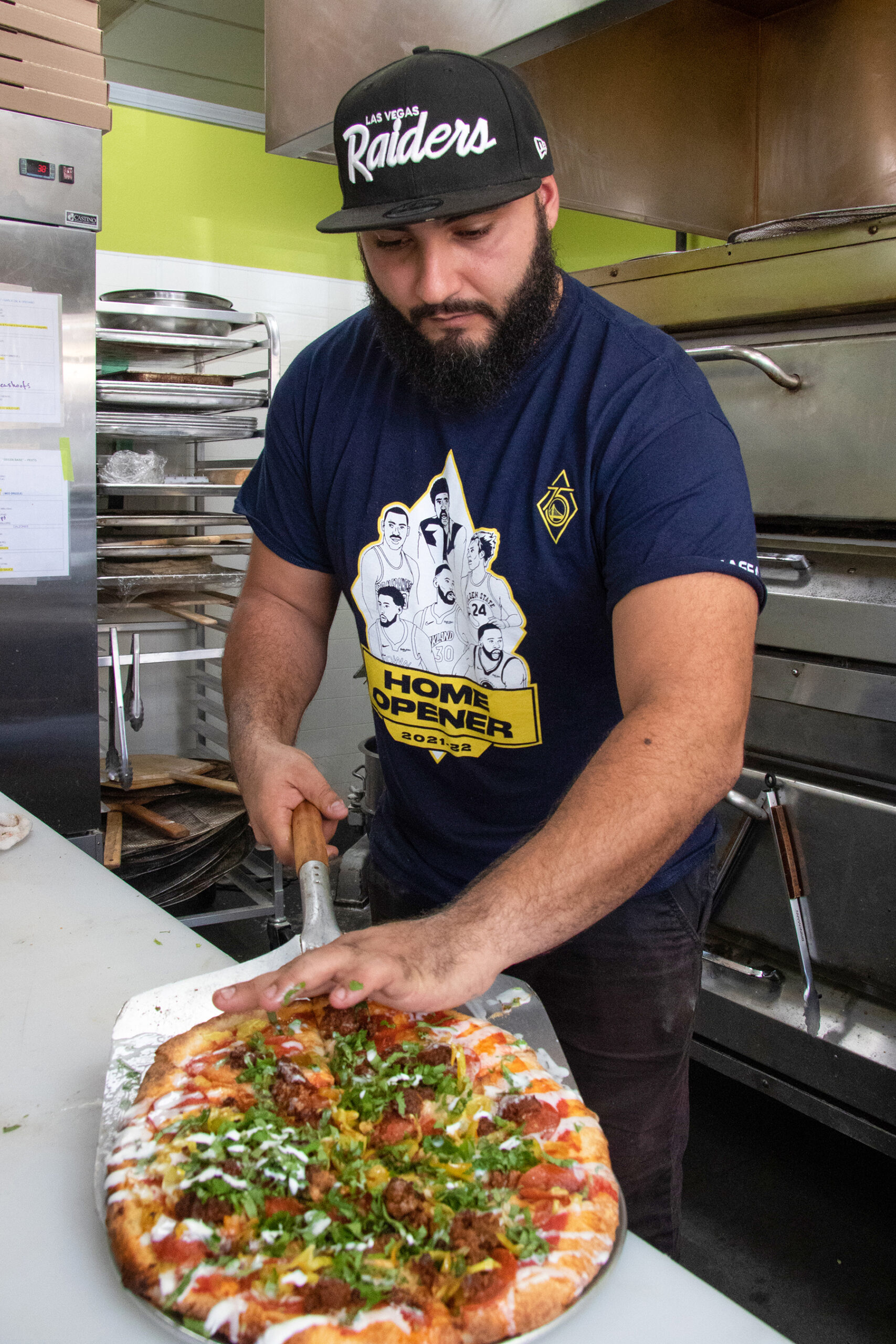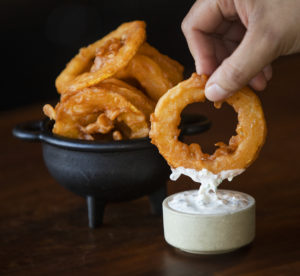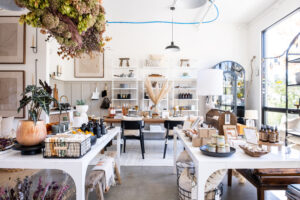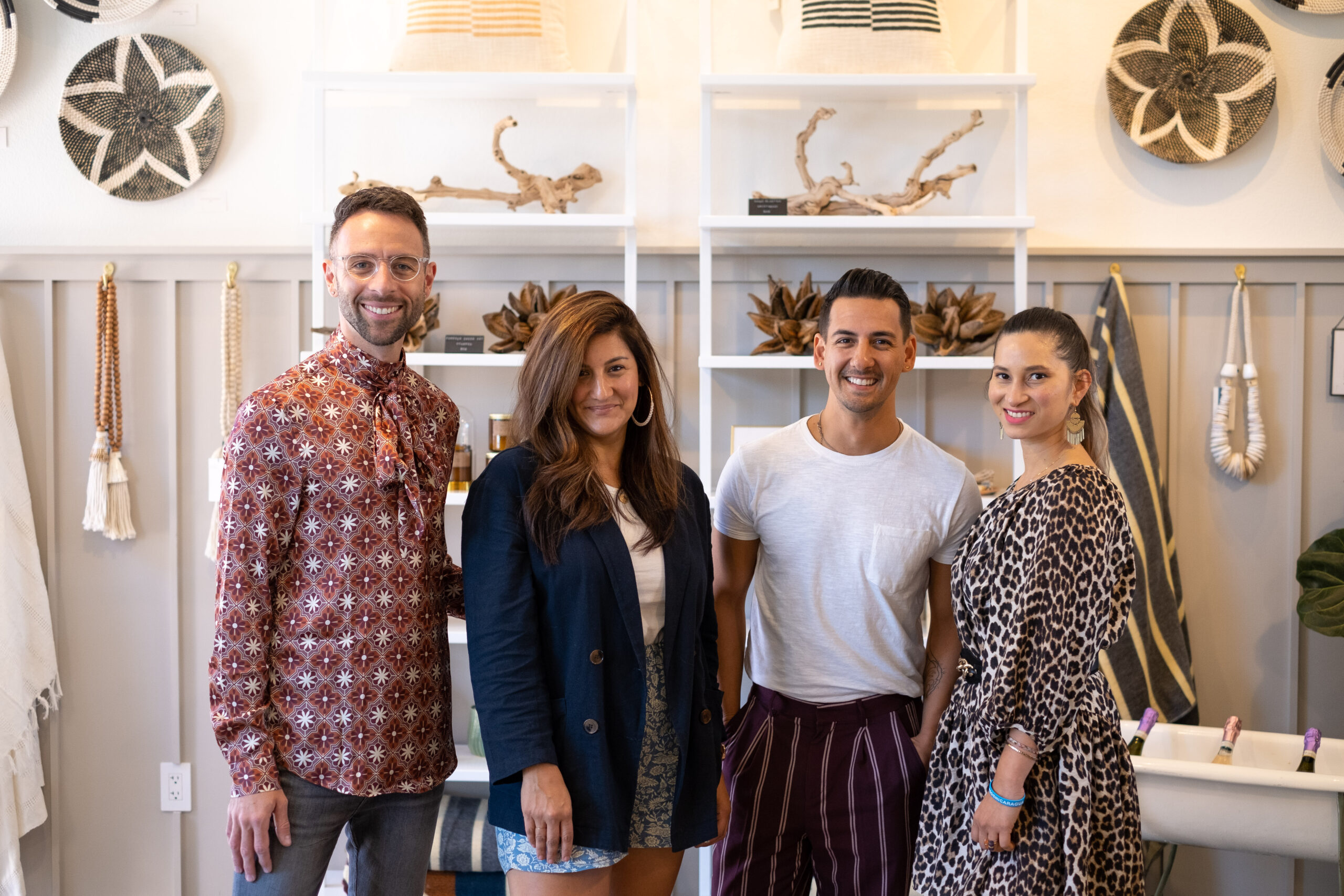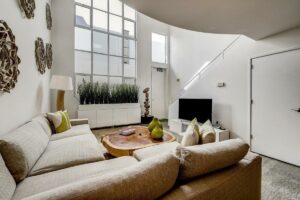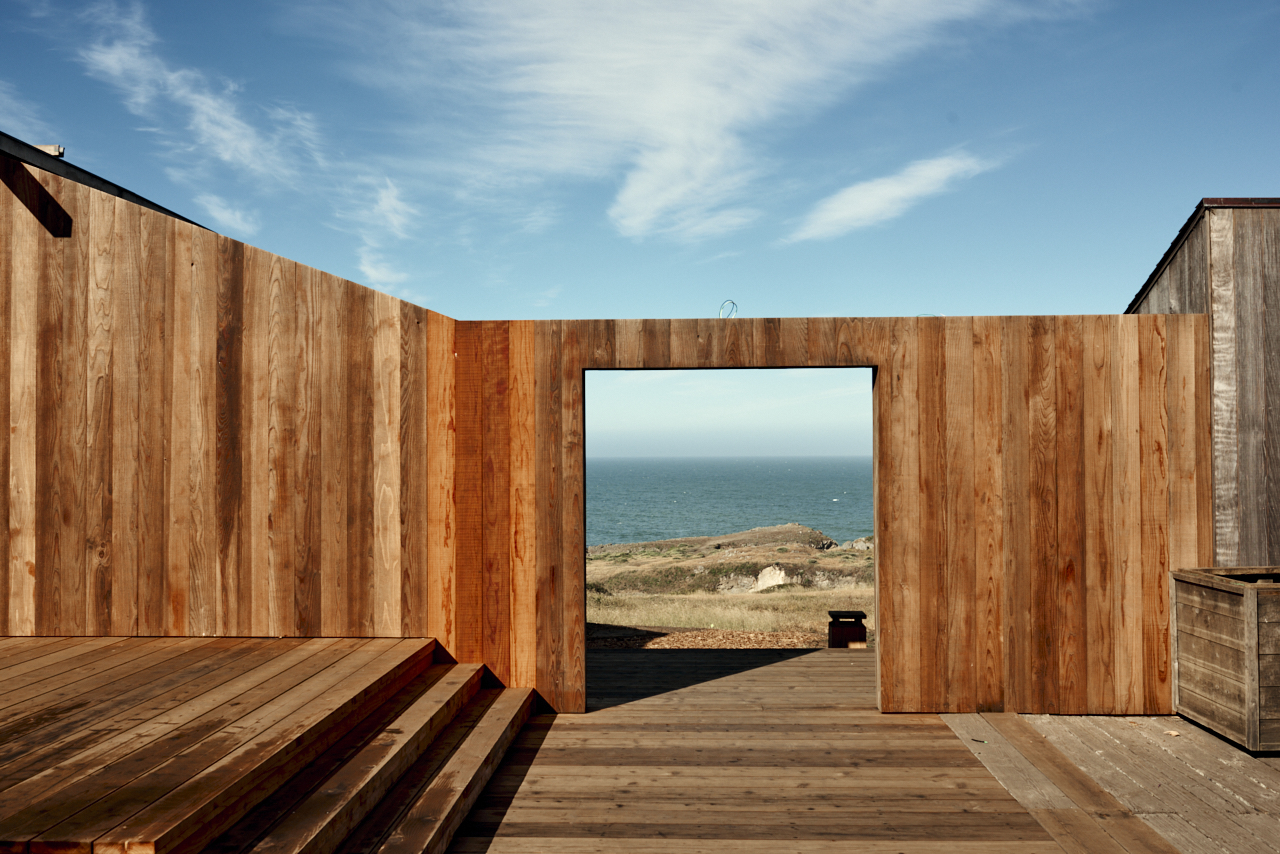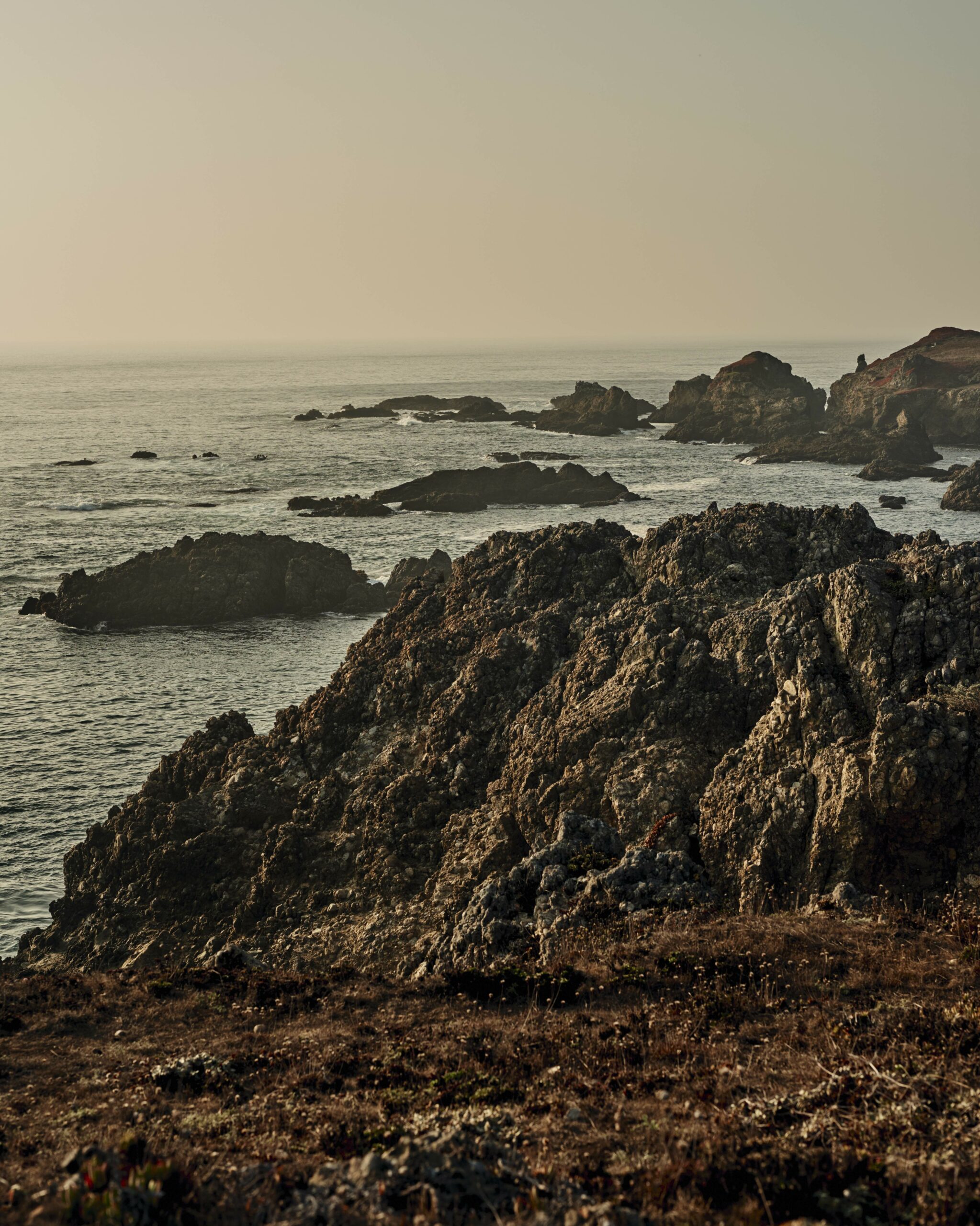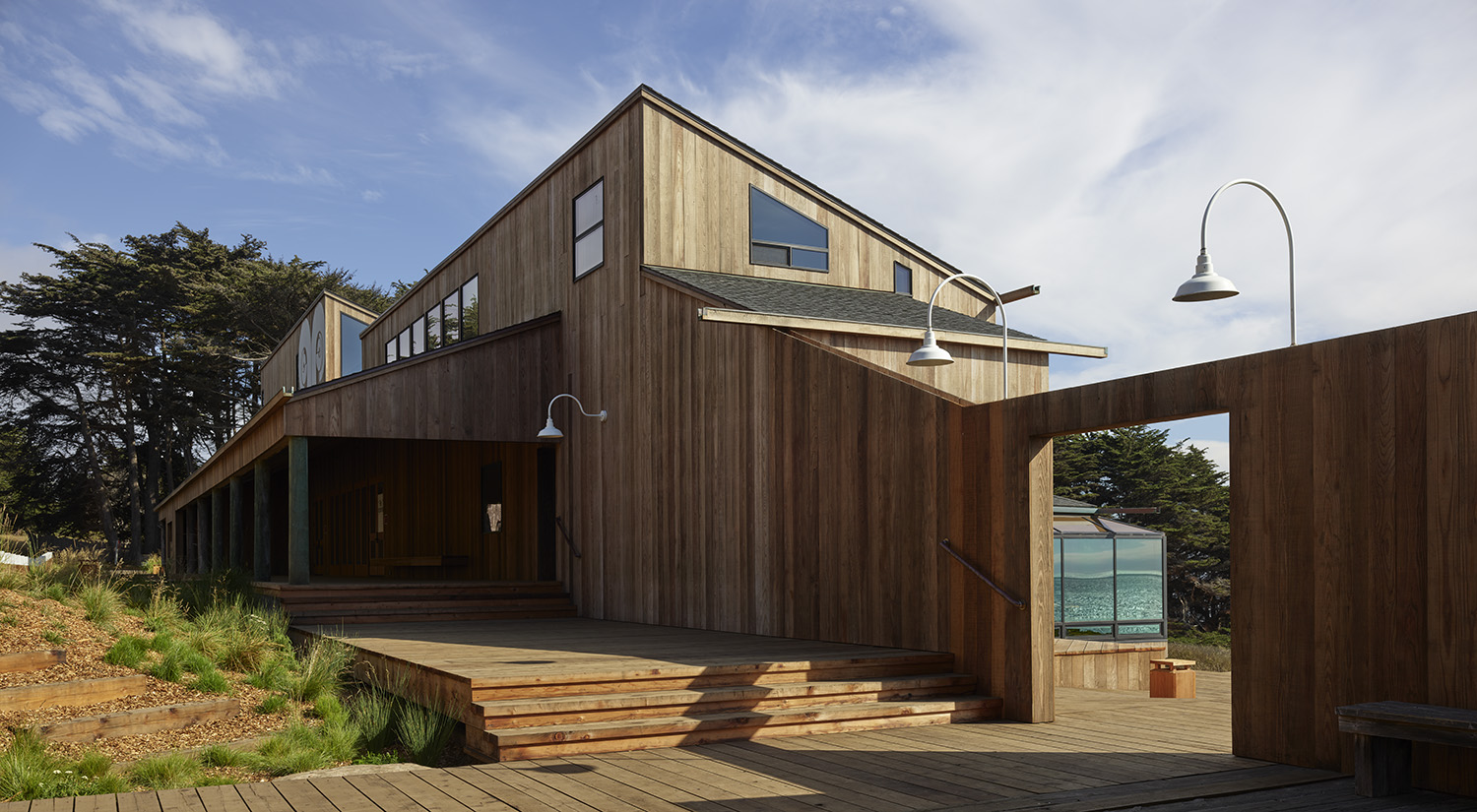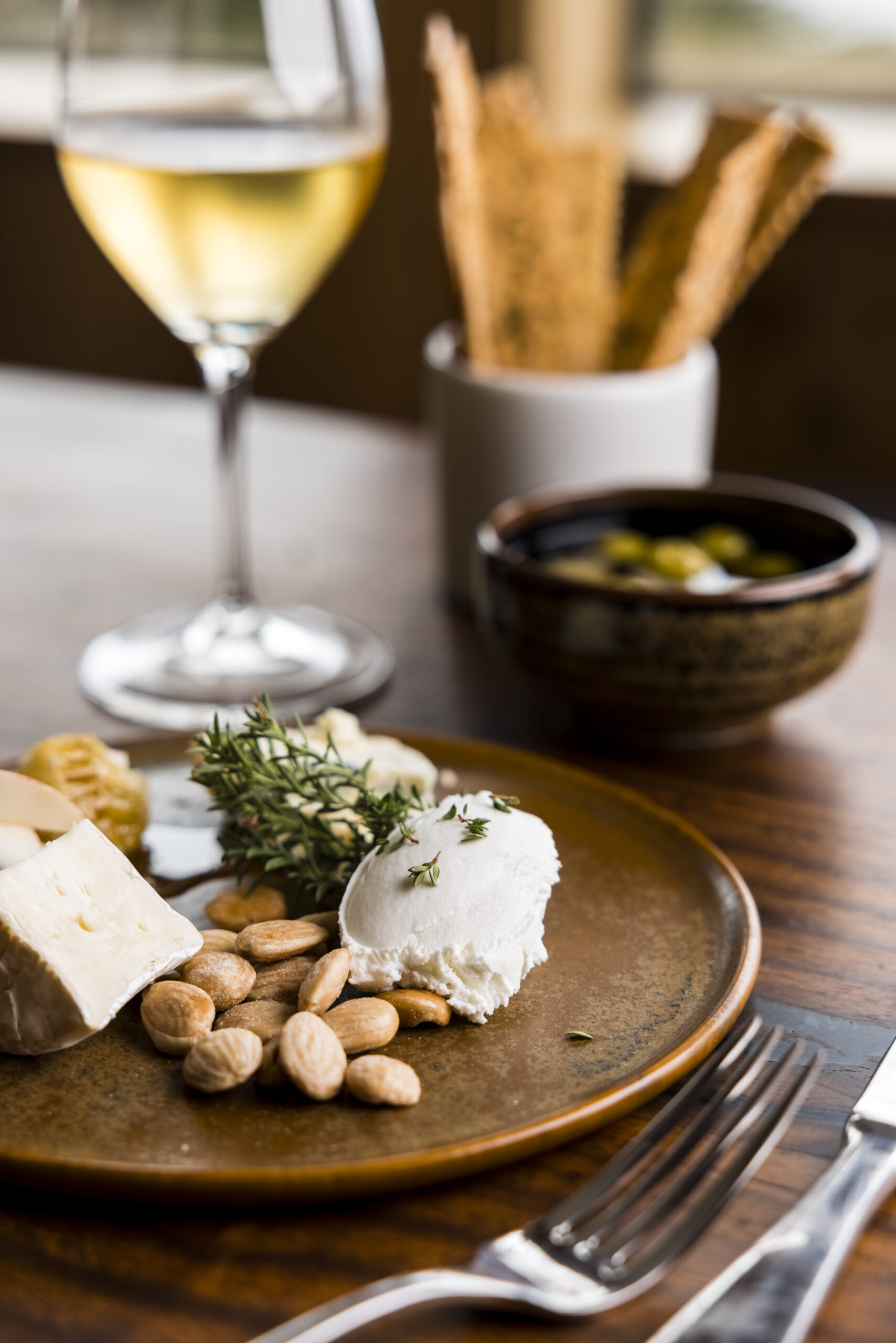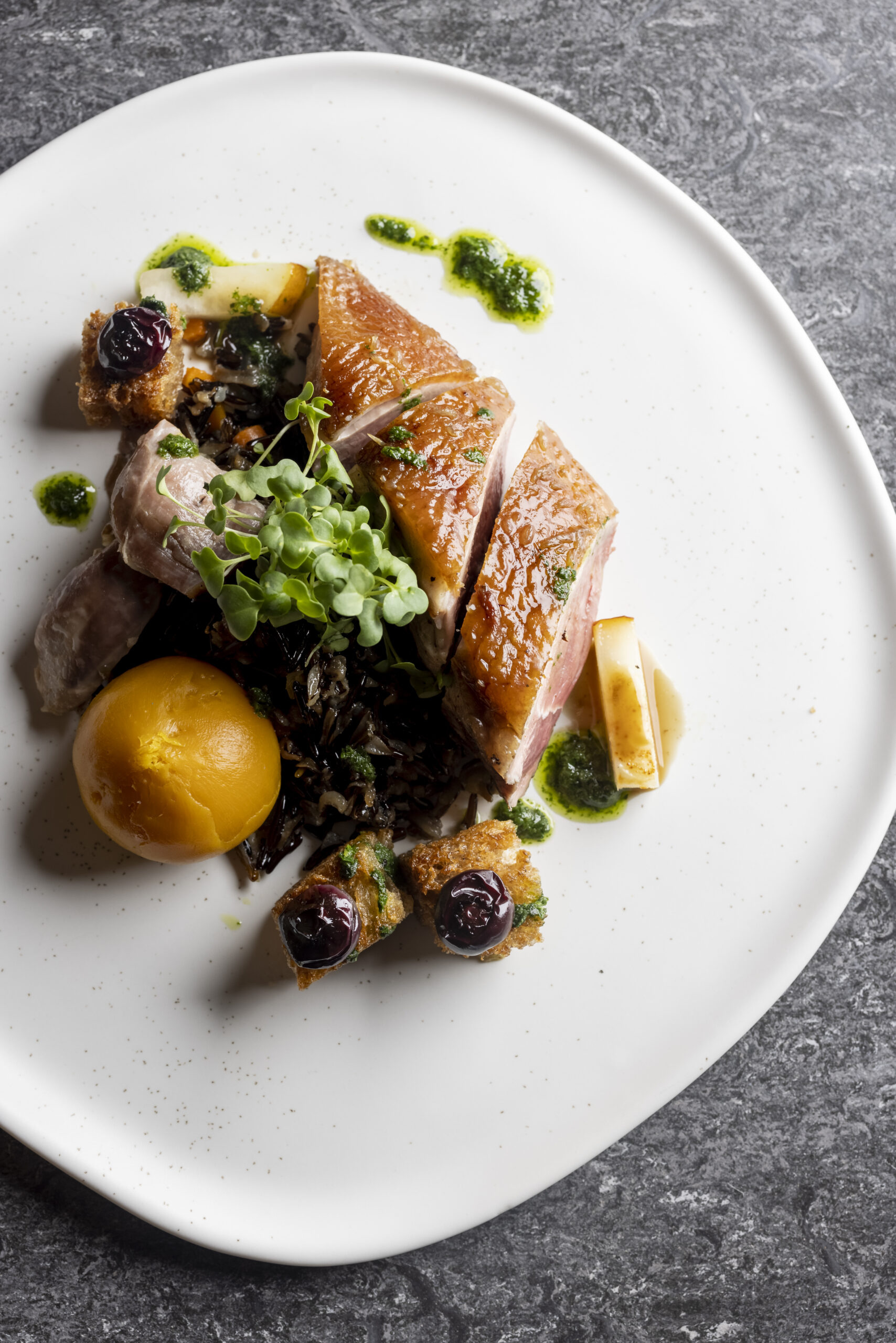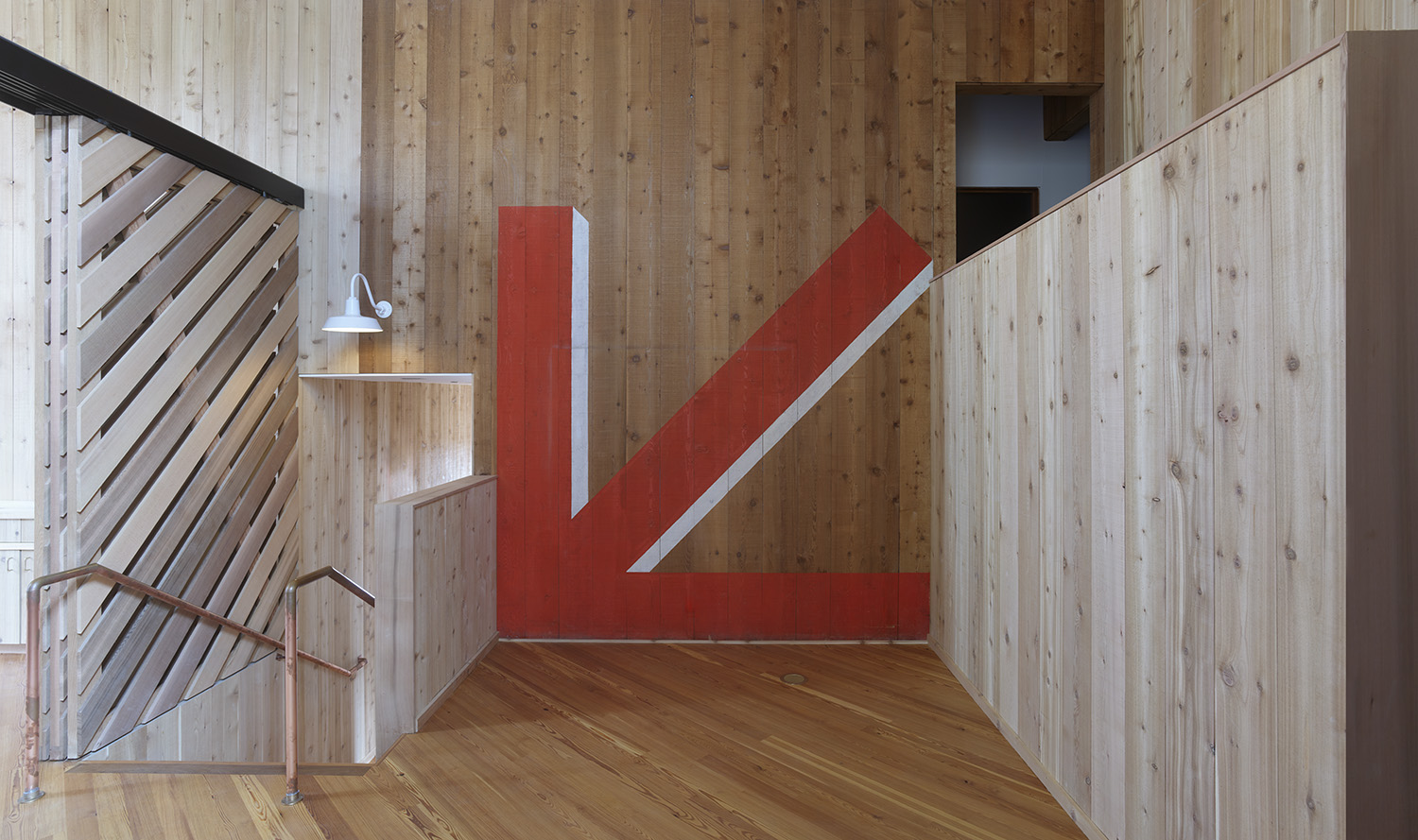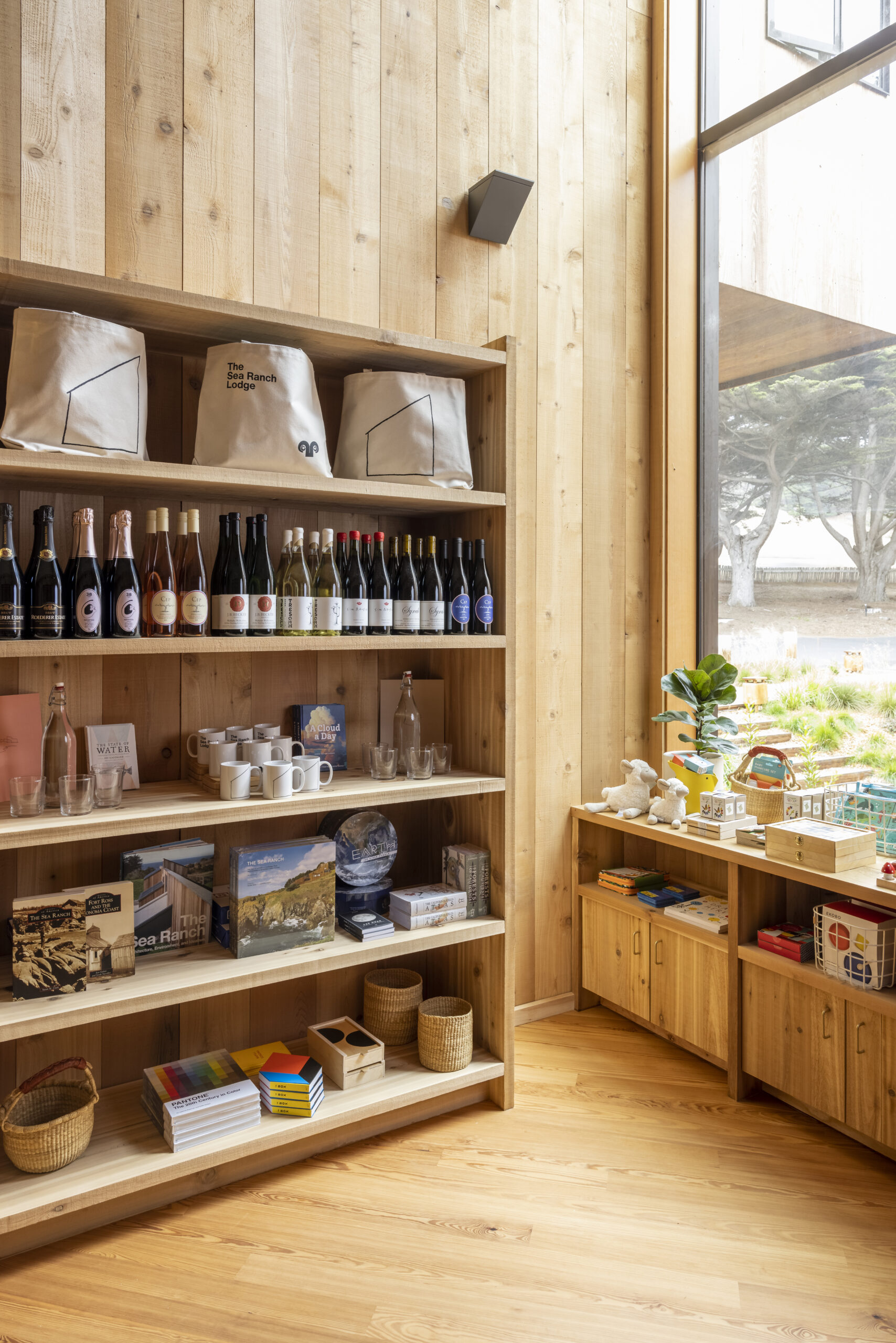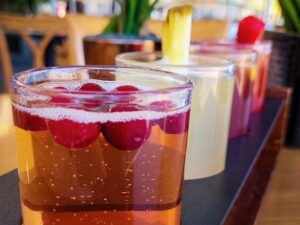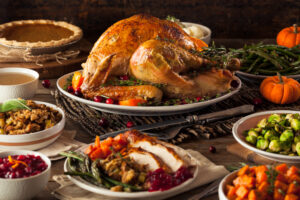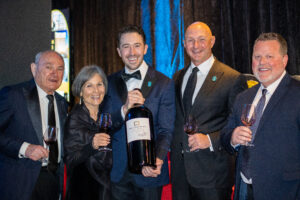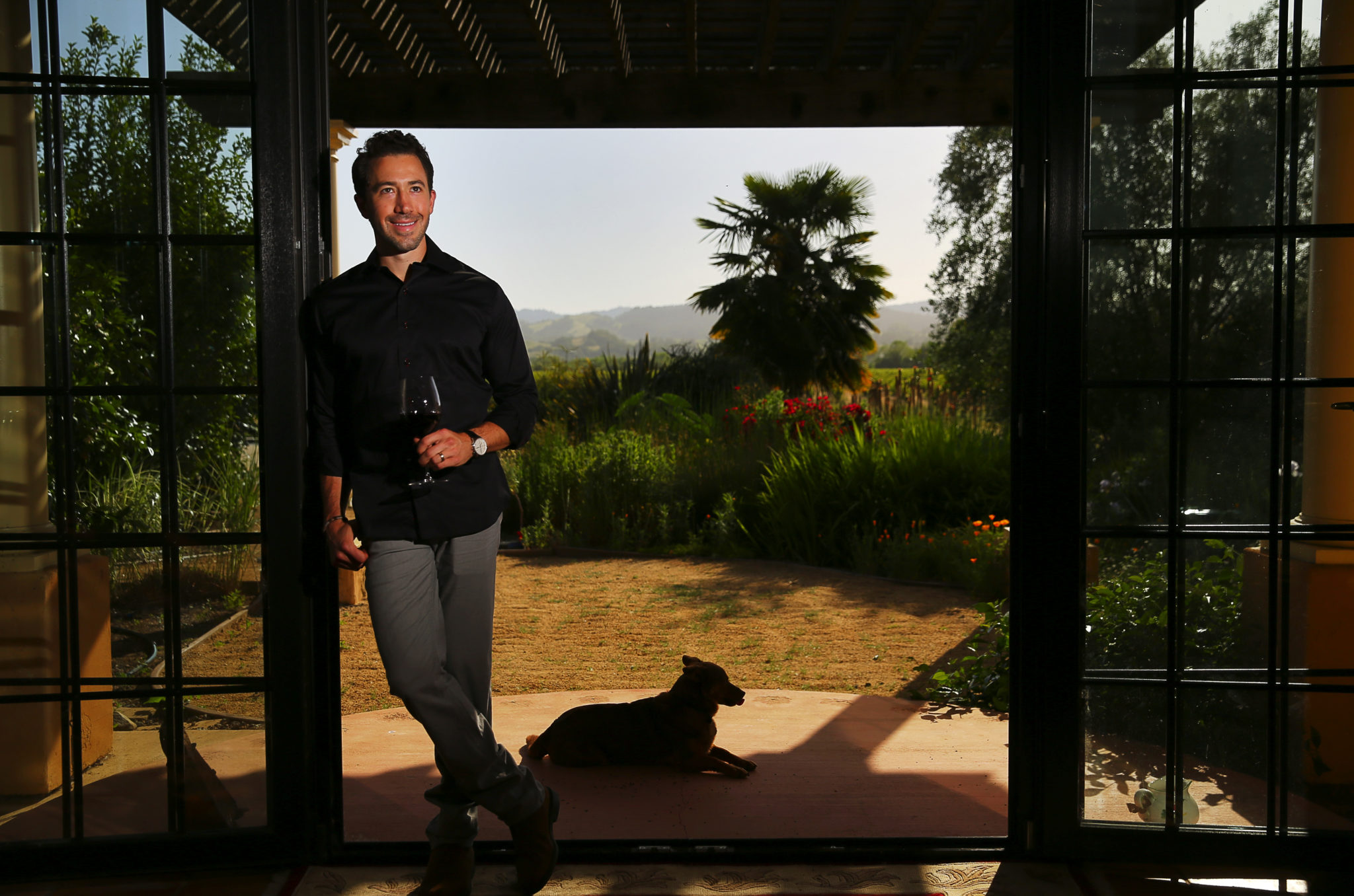Like most Sonoma County winery owners, Ty Caton assumed no one would want to go wine tasting on Thanksgiving Day, a most hallowed of American holidays.
Thanksgiving, after all, is a day for families and friends to gather at home and watch the Macy’s parade and football on TV, toss the pigskin or kick a soccer ball in the backyard and gorge on a massive meal, with wine to wash down the turkey and all the trimmings.
Caton, the grapegrower and winemaker at his family’s Ty Caton Vineyards, kept his Kenwood tasting room closed on Thanksgiving Day until a few years ago, when his tasting room manager offered to keep the business open.
“He didn’t celebrate Thanksgiving,” Caton recalled, “and said he’d open and see if any customers stopped in. I visited the tasting room later that day and the place was packed.” Caton has welcomed Thanksgiving Day guests ever since.
Chris Sebastiani, whose parents, Sam and Vicki Sebastiani, founded Viansa winery and marketplace in Sonoma in 1990, said he already had 100 tasting reservations for Thanksgiving Day, with two weeks still to go until the holiday. Chris and his brother, Jon, left Viansa after Sam and Vicki sold it in 2005. The siblings are back, for what Chris Sebastiani describes as a “strategic partnership” with current owner Vintage Wine Estates.
“The tasting room and marketplace opened on Thanksgiving in 2015, and we’ve continued that tradition,” Chris said. “People know we’re open that day, and we see quite a few regulars — those who want to get out of the house and visitors (here for the holiday). It’s been a total banger for us. We’re kid-friendly, welcome picnicking (with foods purchased from the on-site deli); we have holiday coffee offers, seated tastings and tastings at the bar for walk-ins.”
There are many reasons for locals to visit a Sonoma County tasting room on Thanksgiving: For a breath of fresh air. An escape from helping to prepare the holiday meal, or from relatives who are loved but best enjoyed in small doses. It could be a boredom cure for those not interested in marching bands and NFL football, or an opportunity to pick up a bottle of wine for dinner, with maybe nibbles or a panini to relieve midday cravings.
Not everyone has plans for a family gathering on Turkey Day. Visiting a winery or two can inject some holiday spirit that would be missed by staying at home. The conviviality of seeing old friends and meeting new ones, sharing a bottle of wine or a tasting flight with others, even admiring the almost-dormant grapevines while cupping a mug of peppermint mocha latte, can be supremely satisfying on Nov. 25.
Only a handful of Sonoma tasting rooms are open on Thanksgiving Day, mostly as a nod to employees who want to spend that Thursday with their families. Here are four that have made wine tasting on Thanksgiving Day a tradition and close their doors early enough that staff — and visitors — still have time to enjoy their feast at home. Reservations are highly recommended.
For those needing a host gift or more wine for dinner, see the listing below of Sonoma markets open on the holiday that stock local wines not often found on chain-store shelves.
Viansa
Long known for its Tuscan-style tasting room and marketplace in Sonoma Carneros — and for being open on Thanksgiving Day — Viansa also affords impressive, 270-degree views of Sonoma Valley. The Summit Tasting ($30) is on the hilltop terrace, with broad views and four wines poured from the menu of chardonnay, pinot noir, cabernet sauvignon and Italian varietals. The Fireside Tasting ($75) is warm and private and includes reserve-tier wines served with cheeses and charcuterie. Walk-ins are welcome at the bar on a space-available basis, with physical distancing top of mind. The marketplace deli sells sandwiches, salads, cheeses and salumi; also stop by the coffee bar for Lavazza espressos and drinks with holiday touches. Open 10 a.m. to 3 p.m. on Thanksgiving Day.
25200 Arnold Drive, Sonoma, 800-995-4740, viansa.com
Ty Caton Vineyards
Ty Caton’s 40-acre vineyard is in the Moon Mountain District of the Mayacamas range, and his unpretentious tasting room is on the valley floor below, in Kenwood. Caton specializes in producing bold, mountain-grown red wines, and the Classic Tasting Experience ($20) is a great introduction. Cabernet sauvignon, merlot, petite sirah and syrah are among the bottlings, and there’s the flagship Tytanium wine, a blend of six red grapes grown in the estate vineyard. The Caton Cabernet Collection Experience ($30) showcases several block-specific cabernet sauvignons. Open 11 a.m. to 4 p.m. on Thanksgiving Day.
8910 Sonoma Highway, Kenwood, 707-938-3224, tycaton.com
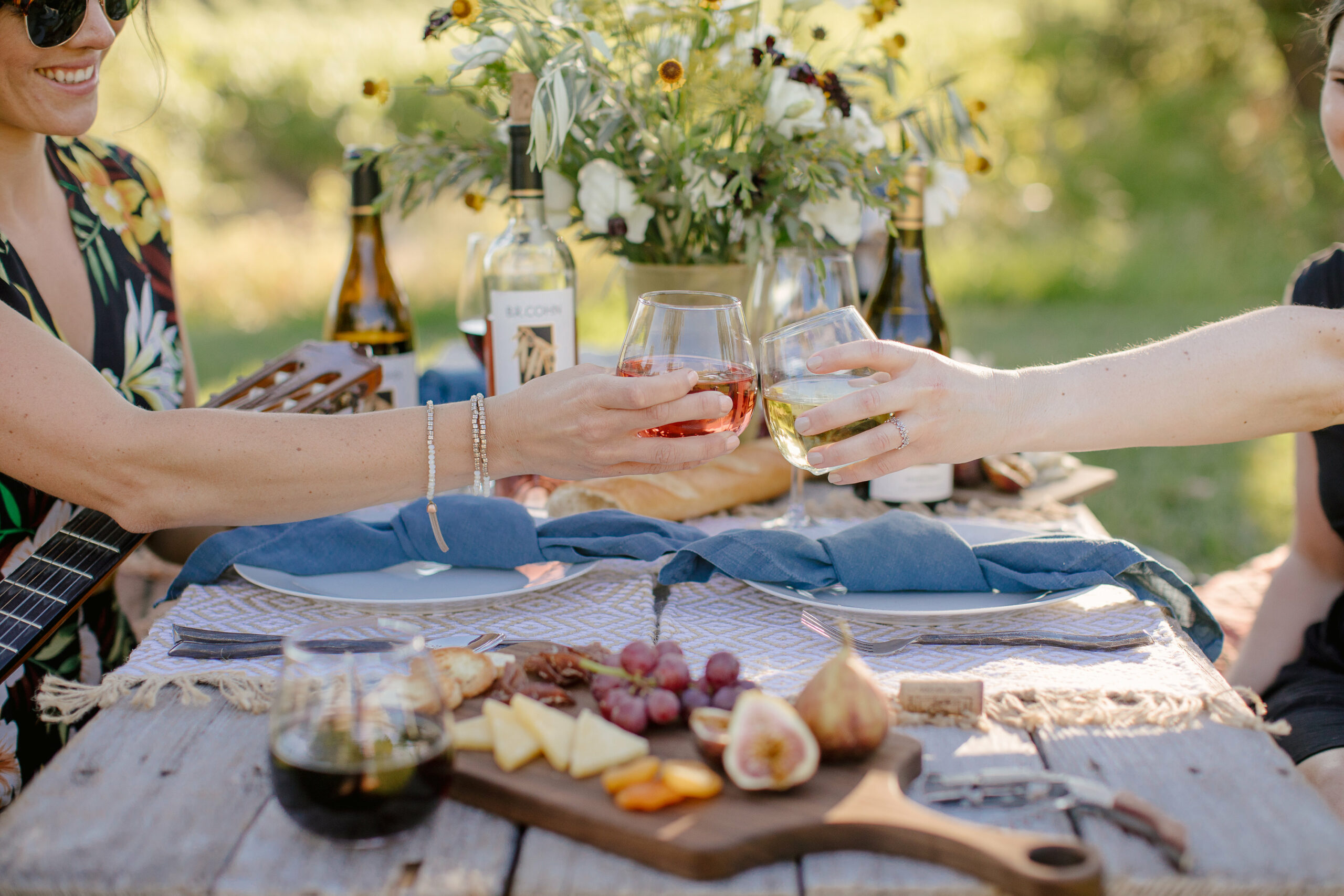
B.R. Cohn Winery & Olive Oil Co.
Bruce Cohn, manager of the Doobie Brothers rock band and others, founded this Glen Ellen winery in 1984. The tasting room is adorned with photographs of the band and gold and platinum records. In addition to wine, Cohn had a passion for the olive trees planted on the Olive Hill Estate and the oils made from their fruit. Vintage Wine Estates now owns the property and brand and has maintained the ranch-house-style tasting room and marketplace for B.R. Cohn’s chardonnays, cabernet sauvignons and other Bordeaux-style varietals, as well as for a vast selection of olive oils and vinegars. Tasting flights are $25; wines by the glass start at $10. Open 10 a.m. to 3 p.m. on Thanksgiving Day.
15000 Sonoma Highway, Glen Ellen, 707-938-4064, brcohn.com
Sonoma Coast Vineyards
A morning drive to Bodega Bay is a holiday must for many, for a blast of cool, salty ocean air; a last glimpse of fall foliage before winter sets in; and, when the conditions are right, purchases of fresh Dungeness crab for Thanksgiving dinner. Crab or not, Bodega Bay is a great half-day trip to make before holiday festivities begin back home, and a stop at Sonoma Coast Vineyards is in order. Bundle up to sit on the outdoor patio (or inside), take in the bay views and enjoy tasting flights of chardonnay, sauvignon blanc, pinot noir, red blends and bubbles ($25). Wines by the glass start at $10. Open 10 a.m. to 3 p.m. on Thanksgiving Day.
555 Highway 1, Bodega Bay, 707-921-2860, sonomacoastvineyards.com
Need a bottle of wine on Thanksgiving Day? These local grocers are open, with limited hours, on the holiday and are great alternatives to shopping for wine at large chain stores. Hours are specific to Thanksgiving Day.
Big John’s Market, 1345 Healdsburg Ave., Healdsburg, 707-433-7151, bigjohnsmarket.com. Open 7 a.m. to noon.
Glen Ellen Village Market, 13751 Arnold Drive, Glen Ellen, 707-996-6728, glenellenvillagemarket.org. Open 6 a.m. to 3 p.m.
Molsberry Market, 522 Larkfield Center, Santa Rosa, 707-546-5041, molsberrymarket.com. Open 7 a.m. to 2 p.m.
Oliver’s Market, oliversmarket.com. Open 7 a.m. to 4 p.m.
9230 Old Redwood Highway, Windsor, 707-687-2050
546 E. Cotati Ave., Cotati, 707-795-9501
560 Montecito Center, Santa Rosa, 707-537-7123
461 Stony Point Road, Santa Rosa, 707-284-3530
Petaluma Market, 210 Western Ave., Petaluma, 707-762-5464, petalumamarket.com. Open 7 a.m. to 3 p.m.


